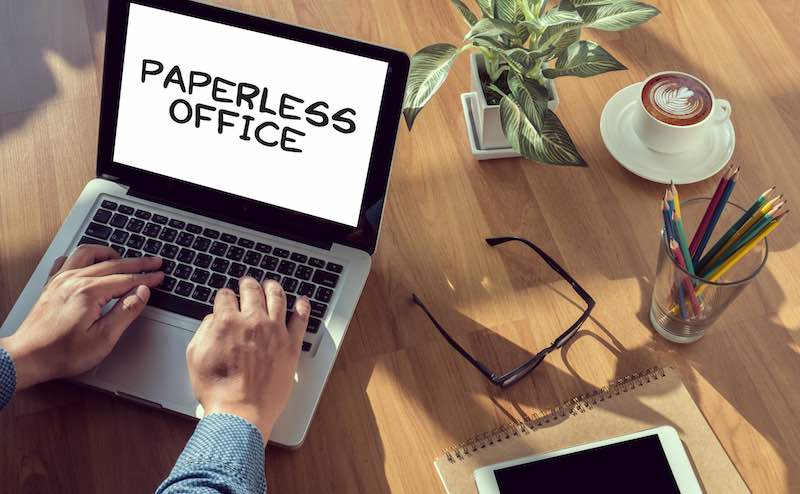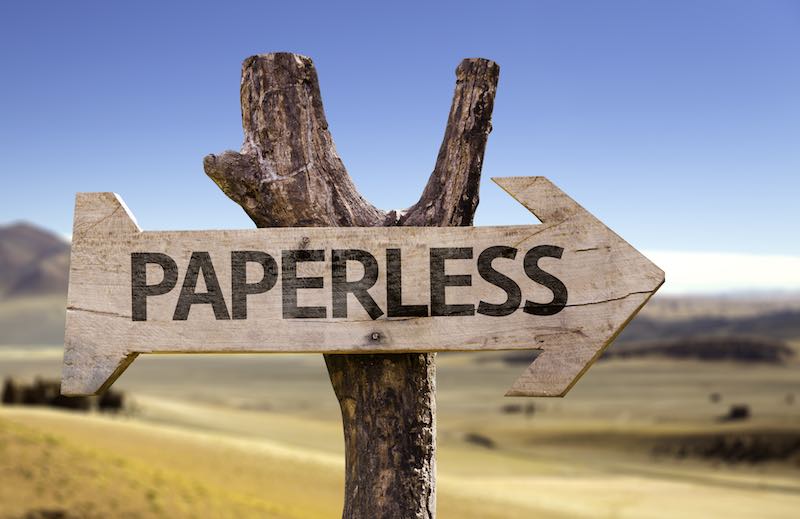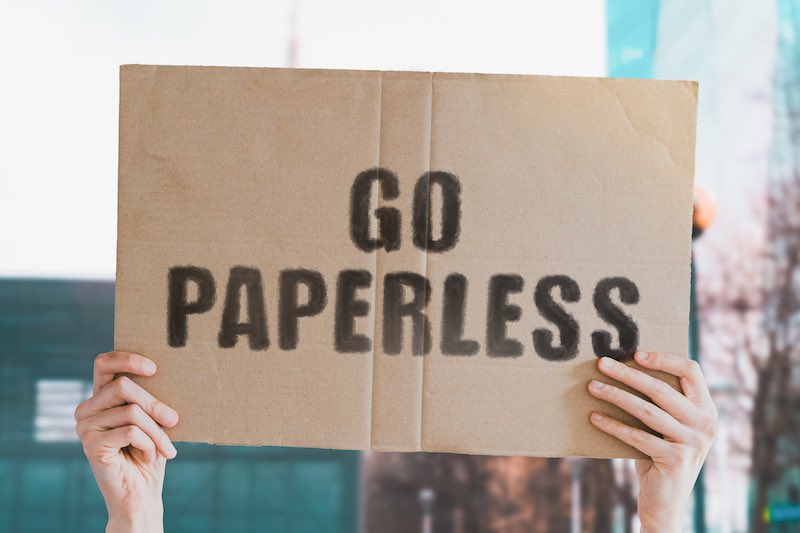
7 Benefits of a Paperless Office Strategy
Table of Contents
Let’s talk about the paperless office strategy and what it has to do with your daily office work.
According to Statista, the world’s three largest paper-producing countries include China, Japan, and the United States.
Here in the U.S., one of the highest uses of paper is for educators. They use about 47 billion sheets of paper each year. Not far behind educators are lawyers and then those in medical fields.
While it may not seem like your company or even your home office would have much of an impact in the scheme of things, the truth is that we can all make a difference when it comes to our resources.
Business owners in both small and large enterprises should have a competent, paperless office strategy to be more eco-friendly.
You can also make fundamental changes in your home office so you can minimize paper waste or even reduce it to zero.
So, please read on to find out more about your essential contribution.
Is Paperless Office A Reality or Not?

When you think of paper, you might consider just the copy paper you put in your printer. Wood pulp, from which paper is made, is a significant material because it has lots of purposes. The term “paper” and “paper products” can comprise various items.
Newsprint, magazines, napkins, paper towels, toilet tissue, craft bags, facial tissue, and a host of packaging materials are derived from wood pulp.
According to the University of Southern Indiana and their list of Paper Recycling Facts, Americans use 85,000,000 tons of paper each year, about 680 pounds per person. That is a whole lot of trees!
Even small business owners use a significant amount of paper for printing essential documents and providing receipts to their clients. In the U.S. alone, 12.1 trillion sheets of paper are used every year.
Unfortunately, 25% of the paper produced ends up being landfill waste, while 33% is municipal waste.
Paper is such a part of our everyday lives, and not just in the office, but the office is probably where you use it the most. For some professions, a paper-less office might be a challenging objective to achieve, but it is still possible to conserve or cut back.
With the amount of paper the average office uses, it makes you wonder if a paperless office is a reality or not?
Let’s look at the benefits of a paperless office as an encouragement to strive towards that objective.
Environmental Benefits of a Paperless Office

It can be challenging to cut down on paper and the number of documents you produce in the workplace.
But it is more attainable when you opt for digitization, a process where you convert the paper files into electronic documents.
There are benefits to using less paper in the office, and here are a few of them:
Save time and be more productive.

Printing, filing, shredding, and storing documents is time-consuming. Processing those documents takes a lot of time. Retrieving documents, sifting through filing cabinets, and looking for misplaced paper can eat up time and shift your focus.
When you keep your documents digitally, you can effectively index and categorize the information you need. That enables you to find the information, process it, and get on to the next tasks.
Keeping your documents digitally can reduce the amount of time you spend on tasks and make you more productive.
Adhere to audit guidelines.

Any office or business will need to store years of data for audit purposes. It means a considerable amount of paper that needs to be stored, labeled, and accessible. That could mean space you do not have and a tremendous amount of work when finding particular documents for an audit.
Suppose instead; you store your documents electronically rather than on paper. In that case, you will efficiently and conveniently hold a large amount of data and stay in compliance with audit regulations and guidelines.
Become more eco-friendly.

The average office worker uses about 10,000 sheets of paper every year. Over 42% of all global wood harvested is converted into a document.
When you strive towards a paperless office, it decreases the number of trees cut down to supply the paper. You will help to reduce the carbon footprint of your office. This is a significant contribution towards a sustainable society.
Increased Customer Service

The quicker you can retrieve information that pertains to your customers, the happier those customers are. When you can receive and process orders faster, answer questions from clients and fulfill requests, the more you are contributing to a successful customer experience. Paper can slow you down as you have to navigate a filing system to locate the correct document.
Studies have shown that satisfied customers are much more likely to be customers and refer others to you. Having a digital document system that allows you to expedite customer needs quickly will improve your overall success.
Less paper is more cost effective.

When you can maintain client relationships through emails and other digital means, you will save money in printing and mailing costs. Not only that, you will be able to track your communication more effectively, including being able to track leads and new clients.
Being able to run your business from an office that uses few, if any, printers, copiers, and fax machines will reduce overhead. The cost of office printers and the ink and toners to fuel them can add up to thousands of dollars a year.
Save Physical Space

Whether you work from home or commute to an office, real estate is usually at a premium. Files, copiers, and printers can take up a lot of valuable space.
If you no longer have a paper-based file retention system, you can free up hundreds of square feet of floor space.
Files will be more secure.

If you primarily use paper to retain your business documents, you will have to invest in locking file cabinets to keep that information secure and ensure confidentiality and privacy. You will need to maintain shredders and paper shredding policies to go along with that.
You and your employees will need to be trained on records management policies. Even with those safeguards in place, on average, a document is lost in a large U.S. organization every 12 seconds, and it can take up to 15 minutes to find that document.
If you store your documents on a cloud-based system, on external hard drives, or flash drives, this information is secure and can be set up to be automatically saved.
In Conclusion
There are many advantages to going to a paperless office. Even if you don’t believe that you can completely eliminate the need for paper documents, you will still benefit by cutting down on the amount of paper you do use.
Every step, even if it is a small one, will help to bring you closer to the reality of a paperless office.

